As dog owners navigate the seasonal shift into summer, a common query arises: do dogs shed more during this warmer period? Understanding the intricate interplay between environmental factors and shedding tendencies is crucial for maintaining a healthy coat.
In this exploration, we uncover insights from a grooming expert on when to anticipate the 'fur tornado' and strategies for managing shedding. By distinguishing between normal and excessive shedding behaviors, this discussion sheds light on how pet owners can support their canine companions through the shedding season.
Stay tuned to discover practical tips for navigating the shedding conundrum and fostering coat health in the summer months.
Key Takeaways
- Dogs shed more in summer to prepare for the heat and shed their undercoat.
- Different coat types shed differently, with double-coated breeds shedding heavier during seasonal changes.
- Managing shedding involves regular grooming, using appropriate tools, and seeking professional assistance if needed.
- Understanding your dog's shedding patterns and implementing preventive measures can help control shedding effectively.
Shedding Patterns by Coat Type
The shedding patterns exhibited by dogs vary depending on their coat type, playing a crucial role in understanding and managing their grooming needs.
Single-coated breeds, such as Boston terriers and boxers, tend to shed less overall but consistently throughout the year.
On the other hand, double-coated dogs like Australian shepherds and golden retrievers shed heavier, especially during seasonal changes, with increased shedding in spring and fall.
Breeds often shed their undercoat before summer to regulate body temperature and prepare for colder weather.
Recognizing these shedding patterns can help dog owners anticipate grooming requirements and tailor their care routines to support healthy coat maintenance throughout the year.
Managing Normal Vs. Atypical Shedding
Managing the distinction between normal shedding and atypical shedding in dogs is crucial for identifying potential underlying issues and providing appropriate grooming care. Normal shedding involves the regular release of hair when petting or minimal fluff around the house. In contrast, atypical shedding signals possible concerns such as stress, allergies, or dietary changes.
If heavy shedding with tufts of fur occurs, a de-shed service at a grooming salon may be necessary. Significant thinning or balding of the coat warrants a veterinary examination. Senior dogs may experience increased shedding due to age.
Understanding these differences enables pet owners to address grooming needs effectively and ensure the well-being of their furry companions.
When to Seek Professional Help
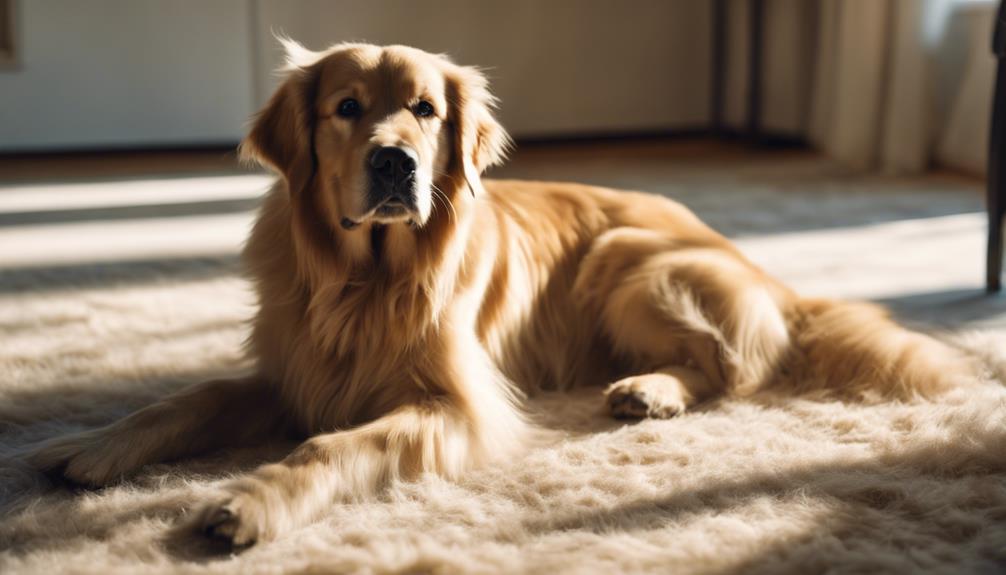
Seeking professional assistance for your dog's shedding concerns can be crucial in ensuring proper grooming and addressing any underlying health issues. If you notice excessive shedding, bald patches, irritated skin, or any unusual changes in your dog's coat, it may be time to consult a professional groomer or veterinarian.
Professional groomers have the expertise to assess your dog's shedding patterns, recommend appropriate grooming techniques, and provide specialized services like de-shedding treatments. Additionally, veterinarians can conduct thorough examinations to rule out any health conditions causing abnormal shedding.
Prompt intervention by professionals can help maintain your dog's coat health, identify potential issues early on, and ensure your furry companion's overall well-being.
Shedding in Senior Dogs
Senior dogs may exhibit increased shedding due to age-related changes in their coat and skin health. As dogs age, their skin becomes less elastic, leading to a decrease in oil production and moisture retention, which can result in a dry and flaky coat prone to shedding. Additionally, hormonal imbalances and underlying health issues common in senior dogs, such as thyroid problems or Cushing's disease, can contribute to excessive shedding.
To manage shedding in senior dogs, regular grooming sessions with a soft brush or comb can help remove loose fur and distribute natural oils, promoting a healthier coat. Ensuring a balanced diet rich in essential nutrients and providing supplements recommended by a veterinarian can also support skin and coat health in senior dogs.
Tips for Reducing Shedding in Summer
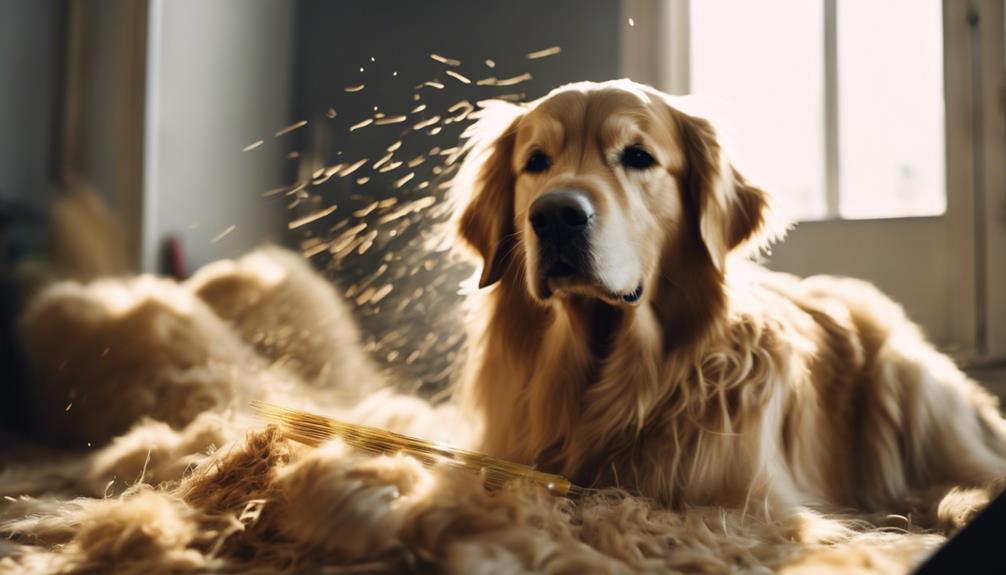
During the summer months, implementing proper grooming techniques can help minimize your dog's shedding. Here are some tips for reducing shedding in summer:
- Regular Brushing: Brush your dog frequently to remove loose fur and prevent matting.
- Balanced Diet: Ensure your dog is receiving a healthy diet rich in essential nutrients to support a strong coat.
- Hydration: Keep your dog hydrated as it helps maintain skin health and reduce shedding.
- Cool Baths: Give your dog cool baths to soothe the skin and potentially reduce excessive shedding.
The Role of De-shed Services
Proper grooming techniques, such as de-shed services, play a crucial role in managing and controlling dog shedding, especially during seasonal changes like summer. De-shed services involve the removal of loose undercoat fur that contributes significantly to shedding. These services are particularly beneficial for double-coated breeds that shed heavily during seasonal transitions.
Regular de-shedding sessions every 4-8 weeks can help maintain a healthy coat and reduce the amount of loose fur around the house. Professional groomers are equipped with the knowledge and tools to effectively perform de-shed services, ensuring that your dog's coat is kept in optimal condition.
Importance of Grooming Equipment
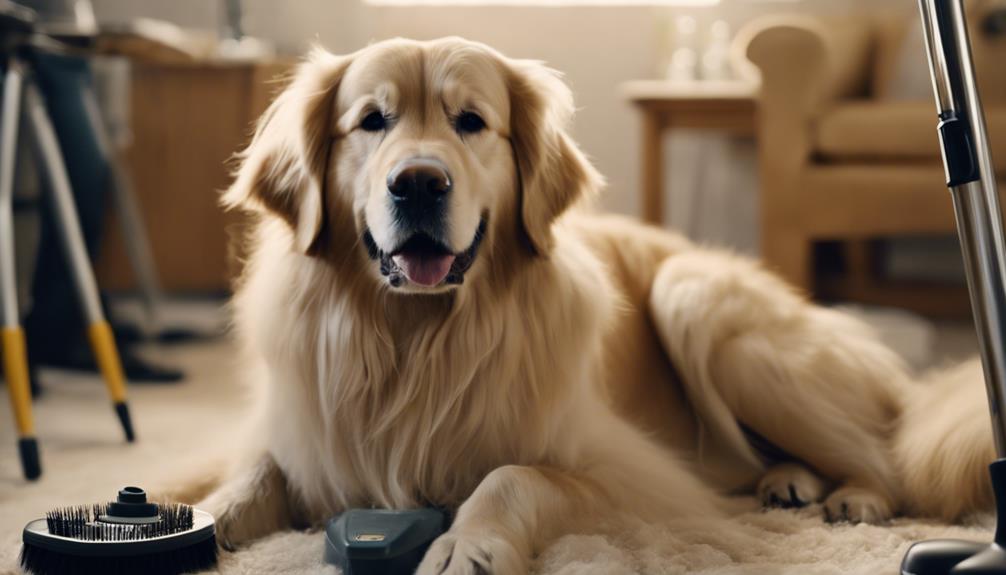
The significance of quality grooming equipment cannot be overstated in ensuring effective dog grooming practices and coat maintenance.
- Precision Clippers: High-quality clippers are essential for trimming hair with accuracy, especially in sensitive areas.
- Slicker Brushes: These brushes are effective in removing loose fur and preventing matting in the coat.
- Stainless Steel Combs: Combs help detangle knots and ensure the coat is smooth and well-groomed.
- Professional Dryers: High-velocity dryers are crucial for drying thick coats quickly, reducing the risk of skin issues.
Investing in top-notch grooming tools not only streamlines the grooming process but also contributes to the overall health and appearance of your furry companion.
Shaving Considerations for Shedding
Quality grooming equipment is essential for maintaining a dog's coat, and when considering shaving for shedding control, understanding the implications for different coat types is crucial. Shaving a dog, especially double-coated breeds, can lead to potential skin damage and coat issues. Here is a table highlighting the considerations for shaving based on coat type:
| Coat Type | Shaving Considerations |
|---|---|
| Single-Coated | Minimal impact on coat, but consult a groomer for advice. |
| Double-Coated | Avoid shaving to preserve skin protection and insulation. Seek professional guidance for coat management. |
Guard Hairs and Shedding Control
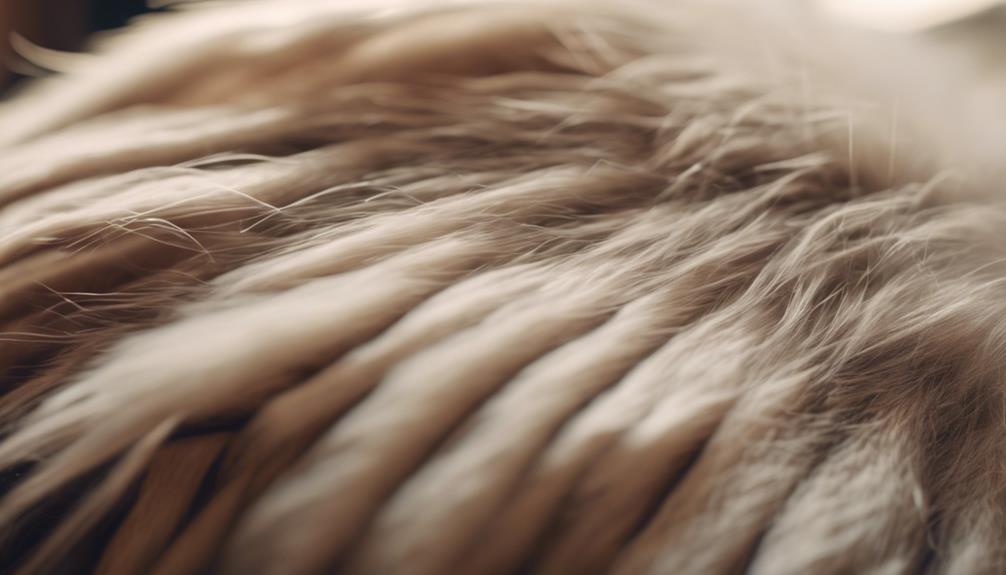
Guard hairs play a crucial role in protecting a dog's skin from sun damage and aiding in proper air circulation, influencing shedding control in different coat types. To effectively manage shedding, understanding the significance of guard hairs is essential.
- Guard hairs act as a protective barrier against the sun's harmful rays.
- They help regulate airflow close to the skin, contributing to overall coat health.
- Different coat types have varying densities and lengths of guard hairs, affecting shedding patterns.
- Proper grooming techniques that preserve the integrity of guard hairs can aid in controlling shedding effectively.
Brushing and Combing Techniques
Effective brushing and combing techniques are pivotal in maintaining a healthy coat and managing shedding in dogs. Regular brushing helps distribute natural oils, prevents matting, and removes loose fur before it ends up on your furniture.
When brushing, start from the skin outward to prevent tangles and ensure you reach the undercoat in double-coated breeds. Comb through the fur to catch any remaining loose hairs and detect any skin issues. Use appropriate tools like slicker brushes for removing loose hair and undercoat rakes for double-coated breeds.
Brushing frequency varies among breeds, but aim for a weekly session as a general guideline. Proper techniques not only aid in shedding control but also promote bonding and monitor your dog's overall health.
Factors Contributing to Excessive Shedding
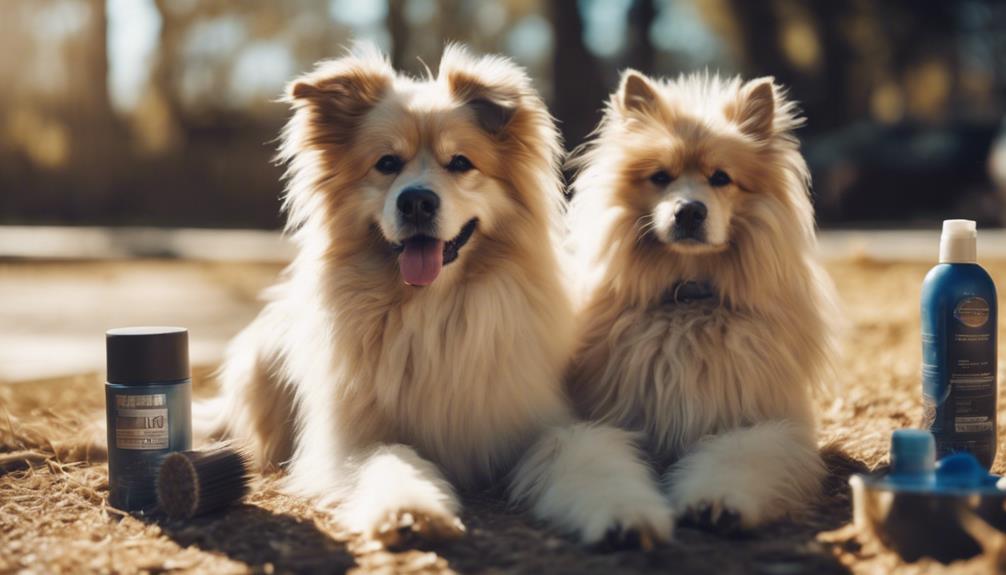
Understanding the factors that contribute to excessive shedding in dogs is crucial for maintaining their coat health and overall well-being.
Factors Contributing to Excessive Shedding:
- Health Conditions: Underlying health issues such as allergies, hormonal imbalances, or skin infections can lead to increased shedding.
- Nutrition: Poor diet lacking essential nutrients can result in weak hair follicles and increased shedding.
- Stress and Anxiety: Emotional distress can trigger excessive shedding in dogs, affecting their coat condition.
- Seasonal Changes: Environmental factors like temperature variations and daylight length can influence shedding cycles, leading to increased fur loss during certain times of the year.
Conclusion
In conclusion, understanding the shedding patterns of dogs, particularly during the summer months, is essential for maintaining a healthy coat.
By recognizing the differences in shedding between single-coated and double-coated breeds, as well as knowing how to manage normal versus atypical shedding, pet owners can effectively navigate the shedding phenomenon.
With the right grooming techniques and awareness of potential factors contributing to excessive shedding, dog owners can help their furry companions maintain a lustrous coat year-round.




